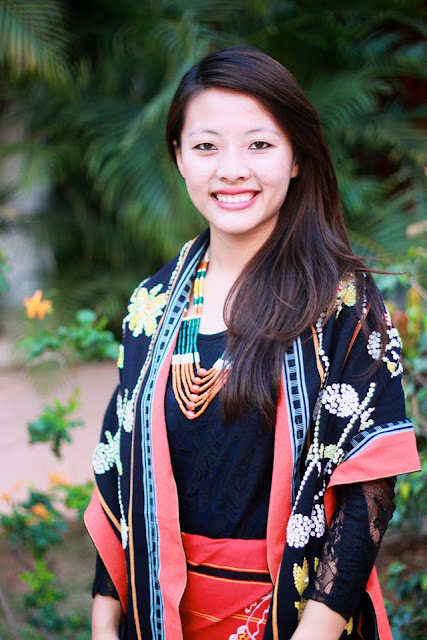 |
| A Naga Woman in traditional dress |
1. Angami
2. Ao
3. Chakhesang
4. Chang
5. Khiamniungan
6. Konyak
7. Lotha
8. Phom
9. Pochury
10. Rengma
11. Sangtam
12. Sumi
13. Yimchunger
14. Zeme-Liangmai (Zeliang)
15. Dimasa-Kachari
16. Kuki
The first fourteen are Naga tribes. Dimasa-Kachari and Kuki are separate tribes. Two other minor tibes of Nagaland are Garo and Mikir.
According to 2011 census of India, the tribal population of Nagaland stands at 17.10 lakhs with more than 3.66 lakh households. Konyak is the largest Naga tribe followed by Sumi (Sema Naga) and Ao. Interestingly, Ao was the first tribe to adopt Christianity and now most of these Naga tibes follow Christianity along with their own local belief system. Ao is also the leading tribe in terms of literacy with overall literacy of 94.4 per cent. Konyaks are at the bottom with literacy rate of 57.0 per cent. The average literacy among scheduled tribes of Nagaland is just over 80.0 per cent.
Kuki forms 1.1 per cent of Nagaland population pie and other tribes combinedly forms less than one per cent of whole population makeup. More than 85 per cent of the population lives in rural areas.
As per 2011 Census, the male-female sex ratio among tribal population of Nagaland is 976 and on another hand, the child sex ratio stands at 942. Angami, Sema and Rengama are the exception with a better sex ratio of 1049, 1007 and 1017 respectively.
Suprisingly, there is low marriage rate which happens below legal age. Merely 1.5 per cent women below 18 years and 1.2 per cent men below 21 years are found married.
Statistical Data of Scheduled Tribes of Nagaland (2011)
 |
| Statistical Data of Scheduled Tribes of Nagaland/Source: Ministry of Tribal Affairs |
